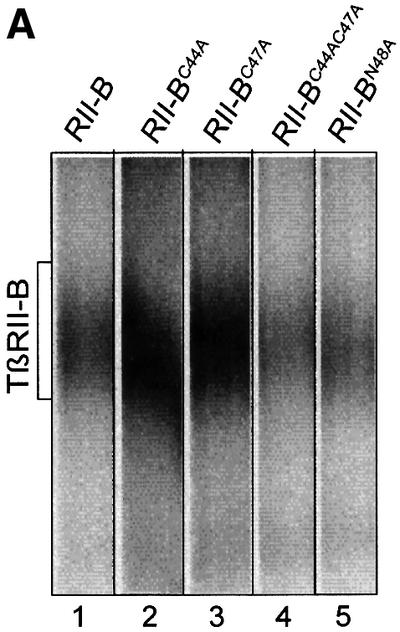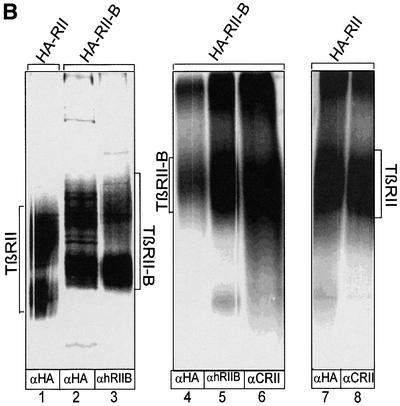

Fig. 5. Neither alternative disulfide bond formation nor N-glycosylation, but addition of N-terminal epitope tags, influences ligand binding to TβRII-B. (A) COS-7 cells were transiently transfected with the wild-type TβRII-B (lane 1) and mutant forms of TβRII-B, where Cys44 (lane 2), Cys47 (lane 3) or Cys44 and Cys47 (lane 4) or Asn48 (lane 5) were mutated to alanine. After binding and crosslinking with [125I]TGF-β2, receptors were immunoprecipitated with α-CRII. The position of ligand-bound TβRII-B is indicated. All four mutants of TβRII-B are able to bind TGF-β2. (B) COS-7 cells were transfected with HA-tagged TβRII or TβRII-B. After metabolic labelling with [35S]cysteine/methionine (lanes 1–3) or binding and crosslinking using [125I]TGF-β1 (lanes 4–8), the receptors were immunoprecipitated using antibodies as indicated. Control immunoprecipitations were carried out with α-hRIIB (lane 5) and α-CRII (lanes 6 and 8).
